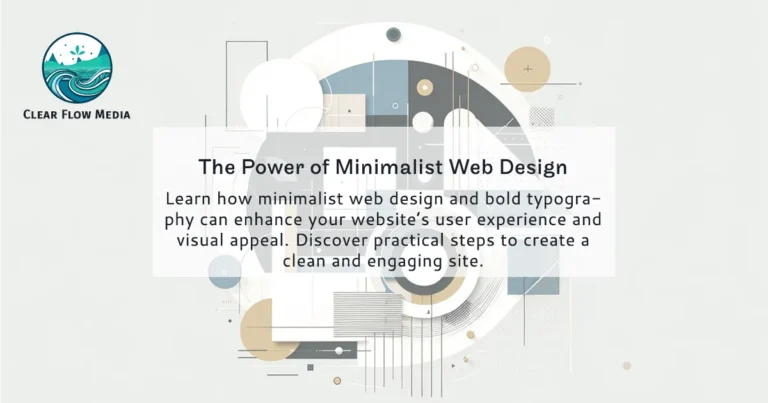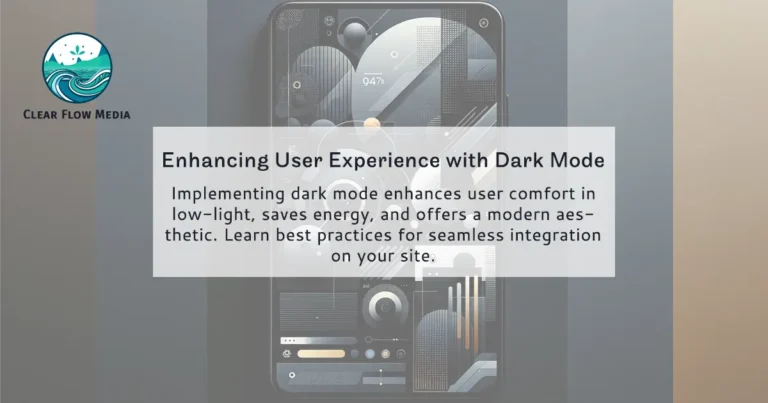Engaging Users with Micro-Interactions
Micro-interactions are subtle animations or feedback elements that respond to user actions, enhancing engagement and creating a more interactive experience on your website. These small details might seem minor, but they can significantly boost user satisfaction and usability. In this article, we’ll delve into the benefits of micro-interactions and provide practical tips for incorporating them into your web design.
The Importance of Micro-Interactions
Micro-interactions play a crucial role in modern web design. They provide instant feedback to users, helping them understand the results of their actions and making the interface feel more responsive and intuitive. For instance, a button that changes color when clicked indicates that the action has been registered, reducing uncertainty and improving the overall user experience.
Moreover, micro-interactions can guide users through your website, subtly directing their attention to important elements or next steps. By enhancing the visual flow and hierarchy, these interactions can make navigation smoother and more intuitive, leading to higher engagement and retention rates.
Types of Micro-Interactions
Hover Effects
Hover effects are a simple yet effective form of micro-interaction. When a user hovers over a button or link, a slight change in color, size, or animation can indicate interactivity and encourage clicks. These effects provide immediate feedback and make the interface feel more dynamic. Hover over the button below to see it in action.
Button Animation
Animated buttons can enhance user interaction by providing visual feedback when clicked. For example, a button might briefly change color or display a loading animation to indicate that the user’s action is being processed. This reassures users that their input has been received and is being acted upon. You can also utilize loading animations like the one below.

Form Field Validations
Real-time form field validations help users understand if their input is correct before submitting a form. As users fill out fields, micro-interactions such as green checkmarks for valid inputs or red error messages for invalid ones can guide them through the process, reducing errors and frustration.
Try it out in the field below. Typing in the box will remove the red message; if you delete what you entered into the field, the message will return. Note: This may not work in some mobile browsers.
Scroll Animations
Scroll animations add a dynamic element to the browsing experience. As users scroll through your site, elements can animate into view, providing a sense of progression and keeping the content engaging. These animations can highlight important information and make long pages feel less static. The element below has a sliding effect on scroll.
Notifications and Alerts
Notifications and alerts can use micro-interactions to capture attention without being intrusive. Subtle animations, such as a bell icon shaking slightly to indicate a new message, can draw users’ attention to important updates without overwhelming the interface. Alerts on a specific action, such as pressing the button below, can give users real-time feedback to actions on the site.
Implementing Micro-Interactions on Your Website
Incorporating micro-interactions into your web design can significantly enhance user experience. However, it’s essential to implement them thoughtfully to ensure they add value rather than becoming distractions. Here are detailed steps to help you effectively integrate micro-interactions into your website.

Focus on User Needs
When designing micro-interactions, always start with the user in mind. The primary purpose of these interactions is to enhance the user’s journey through your website. Each micro-interaction should serve a clear purpose, such as providing feedback, guiding the user, or adding a touch of delight. For example, a subtle animation on a button when it’s clicked can reassure users that their action has been registered.
Consider the different scenarios in which users interact with your site. For instance, when filling out a form, users might appreciate real-time validation that lets them know if they’ve made an error before submitting. This not only improves user satisfaction but also reduces frustration. By focusing on practical user needs, you ensure that your micro-interactions are meaningful and useful.

Keep It Subtle
Micro-interactions should enhance the user experience without overwhelming the main content. Subtlety is key. Use gentle animations and transitions that complement your design rather than detract from it. For instance, a slight color change or a soft bounce effect on a button can be enough to indicate interactivity without being distracting.
The goal is to create a seamless and intuitive interaction flow. Avoid overly flashy or complex animations that might divert attention from the primary content. Instead, opt for subtle cues that naturally guide the user’s actions. By keeping micro-interactions understated, you ensure they contribute positively to the overall user experience without becoming a source of annoyance.

Maintain Consistency
Consistency in design helps users develop a sense of familiarity and predictability, making the interface easier to navigate. Ensure that similar actions produce similar interactions across your site. For example, if hovering over buttons causes them to change color, this effect should be applied to all buttons to create a cohesive experience.
Consistency also applies to the timing and style of animations. If you use a fade-in effect for menu items, apply the same effect across all similar elements. This uniformity helps users understand how the site behaves and increases their comfort level. By maintaining consistency in your micro-interactions, you build trust and make your website more user-friendly.

Optimize Performance
Performance optimization is crucial when implementing micro-interactions. Heavy animations can slow down your site, negatively impacting the user experience. To ensure your site remains fast and responsive, use lightweight CSS animations and minimize the use of JavaScript where possible.
Optimize images and other assets to reduce loading times. Compress files and use modern formats to ensure they load quickly. Also, consider the performance impact on different devices and browsers. Test your site extensively to identify and address any performance issues. By focusing on performance optimization, you ensure that micro-interactions enhance rather than hinder the user experience.

Test and Iterate
Implementing micro-interactions is an iterative process. Conduct usability testing to gather feedback on how users interact with your site and how they respond to the micro-interactions. Observing real users can provide valuable insights into what works and what doesn’t.
Use A/B testing to compare different versions of micro-interactions and determine which ones are most effective. Collect data on user engagement and behavior to refine your approach. Regularly update and improve your interactions based on user feedback and performance metrics. By continuously testing and iterating, you ensure that your micro-interactions evolve to meet user needs effectively.
Micro-interactions are a powerful tool for enhancing user engagement and creating a more interactive web experience. By providing instant feedback, guiding users through your site, and adding subtle touches of delight, these small details can significantly improve usability and satisfaction.
When implementing micro-interactions, focus on user needs, maintain subtlety and consistency, optimize performance, and continually test and iterate. With careful planning and thoughtful design, micro-interactions can transform your website into a dynamic and engaging platform that resonates with your audience.


